Dog Days
Pets aren’t allowed in our museum or library, but you’ll find plenty of them in our collections.

Pets aren’t allowed in our museum or library, but you’ll find plenty of them in our collections.
Here at the Science History Institute, we love all types of pets, but one type of companion animal shows up more than any other in our collections: dogs. Canine friends appear in surprising places across our diverse collections. So let’s meet some of our four-legged historical friends.
The Institute has a fine art collection with more than 500 works. These items cover a span from the 16th through the 21st centuries, with many focused on depictions of alchemists. Even alchemists needed reliable lab partners, and dogs are frequently found in these paintings.

In An Alchemist at Work, an 18th-century oil painting by Mattheus van Helmont, the alchemist’s dog has found a cozy spot for a nap as the alchemist puzzles over a flask. The detritus of alchemical life surrounds the dog in the form of broken vessels and books. Wisely, the dog lays out of reach of the tower of books that threatens to topple over.

A small dog sits on a cushion in the foreground of the painting of a bustling laboratory by Gérard Thomas. The dog seems to be intently watching a man on a bench with a bellows, who is in turn focused on heating a vessel. Their gazes mirror each other. The dog’s brown and white colors appear in the white shirt and brown vest of the man, suggesting a close bond between the two.
The theme of man’s best friend as the scientist’s favorite lab partner recurs well after the age of alchemy. Over in the archives, dogs pop up as companions to scientists and industrialists.

In this 1914 postcard to chemist Georg Bredig, one of his former students announces his wedding and impending military service, along with a photograph of the young couple with their dog.

In this image, Monsanto chemical company founder John Francis Queeny poses with a small dog on a chain.
The Science History Institute also holds a large collection of scientific advertising. Unsurprisingly, cute and cuddly canines make great props for promoting products to multiple audiences, from technoscientific practitioners to the general public.
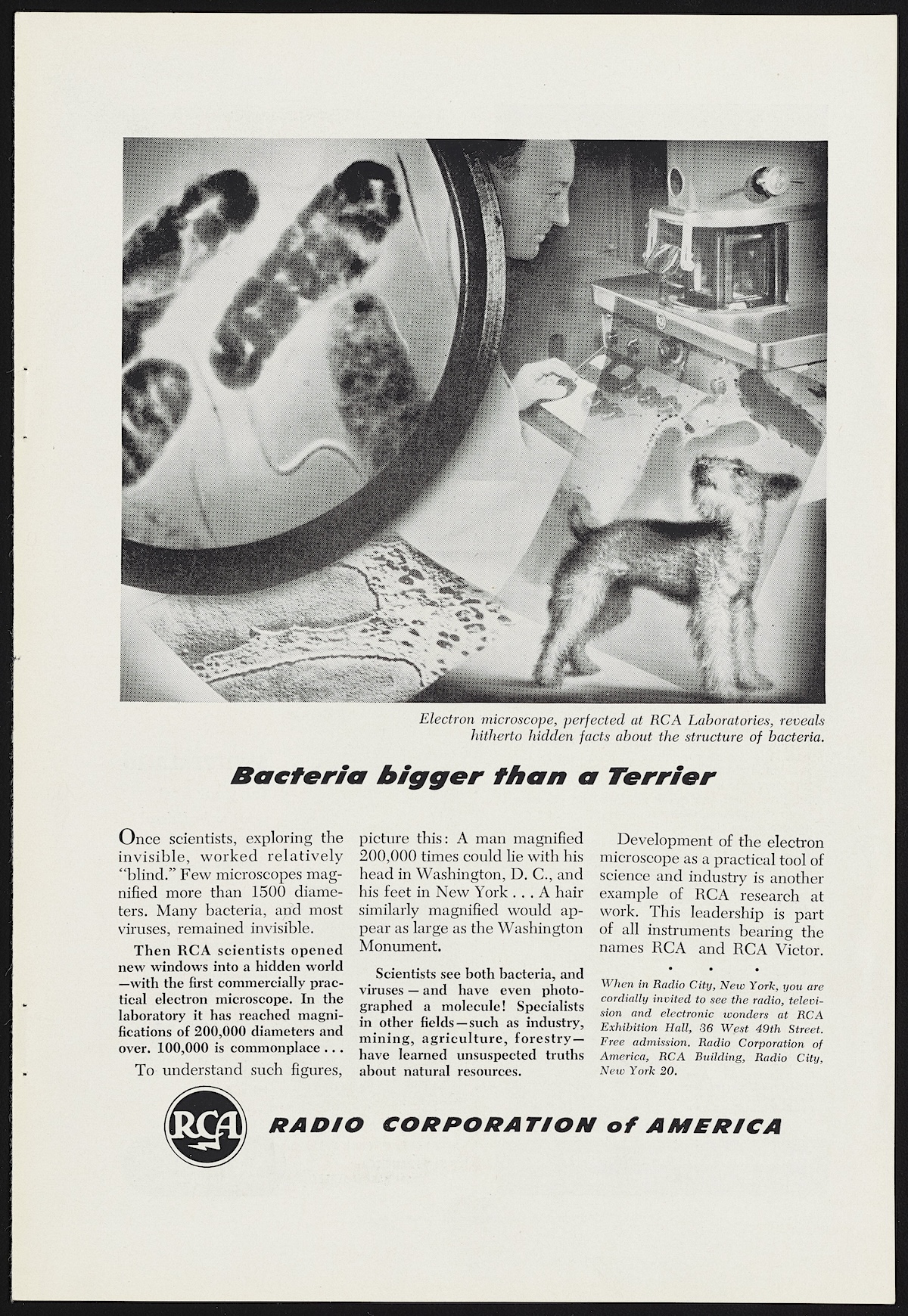
RCA aimed this 1948 advertisement for an electron microscope to a professional audience. To illustrate the instrument’s magnifying prowess, the ad claimed that the new microscopes could magnify a tiny bacterium into an image the size of a terrier. Electron microscopes were first produced commercially in 1938 and work by beaming electrons through specimens instead of light. By doing so, the instruments allowed scientists to overcome the resolution limitations of visible light microscopes and uncover new structures in bacteria and viruses.

At first glance, you might think Dow targeted this 1955 advertisement at dog owners. But the company wasn’t advertising dog food; it was promoting methionine, a synthetic amino acid and food additive. Directed at dog food manufacturers, the ad assured producers that the additive would allow them to cut costs by using less meat in their products.

Dogs make great companions, but they can also add a layer of chaos to our lives, as this 1950s ad from Dow illustrates. Saran plastic promised to ease life as a dog owner through fabric “durable enough to withstand the antics of children and pets” when used on furniture.
Finally, the Institute has conducted more than 700 interviews with scientists that can be found in our oral history collection. Many of our interviewees mention the impact of dogs on their lives, though none as hilariously as the Japanese American scientist Toshio Tsukiyama. As children, Toshio and his sister wanted a dog so desperately that they staged a fake kidnapping to demand a pet dog. In his oral history, Toshio explains how his parents thought that Muku, a Hokkaido dog, would encourage the siblings to become veterinarians. Instead, the siblings veered into the world of scientific research.
“Both of us ended up being basic research scientists, so my parents have to take their dog to another vet,” Toshio told the interviewer. “They used to claim that that was a failed investment, because we were useless as veterinarians.”
Dogs also inhabit the homes of many Science History Institute staff members. Here are some who help get us through the dog days of summer.

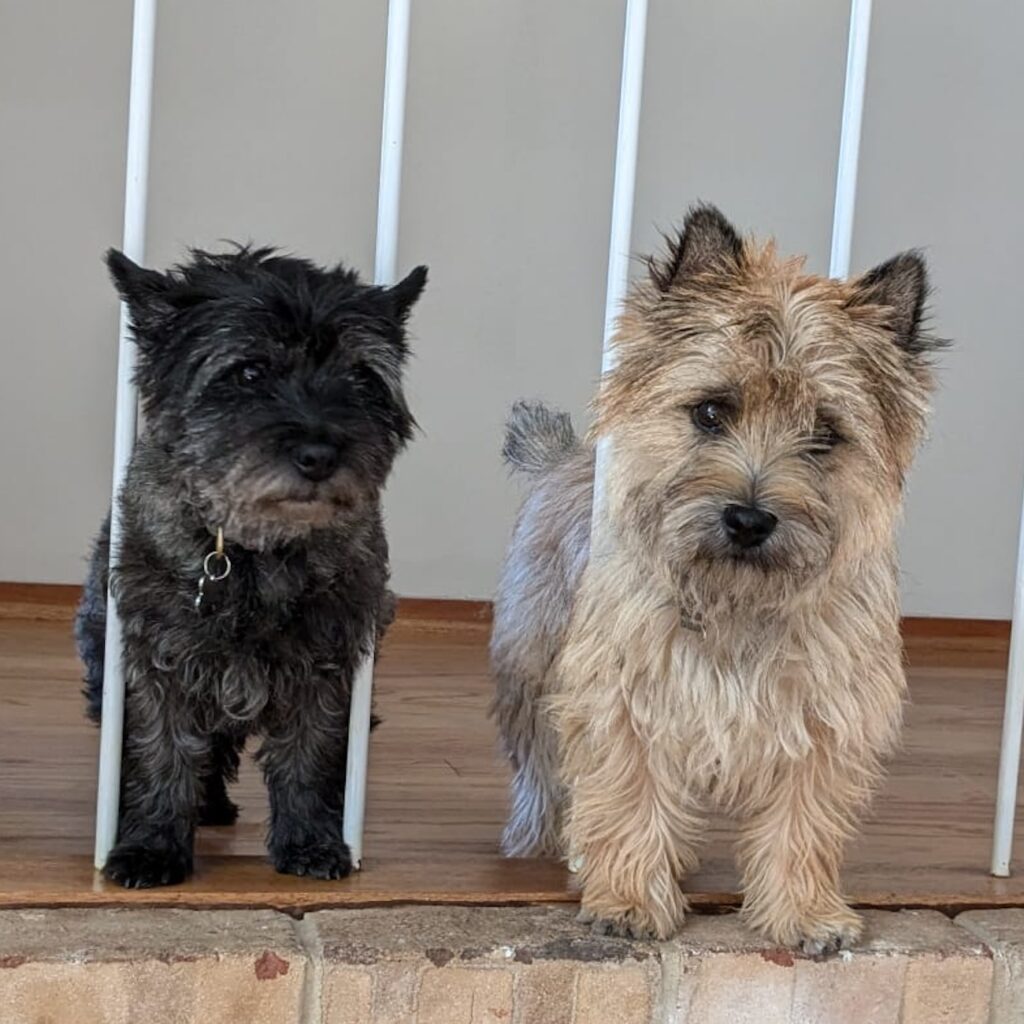






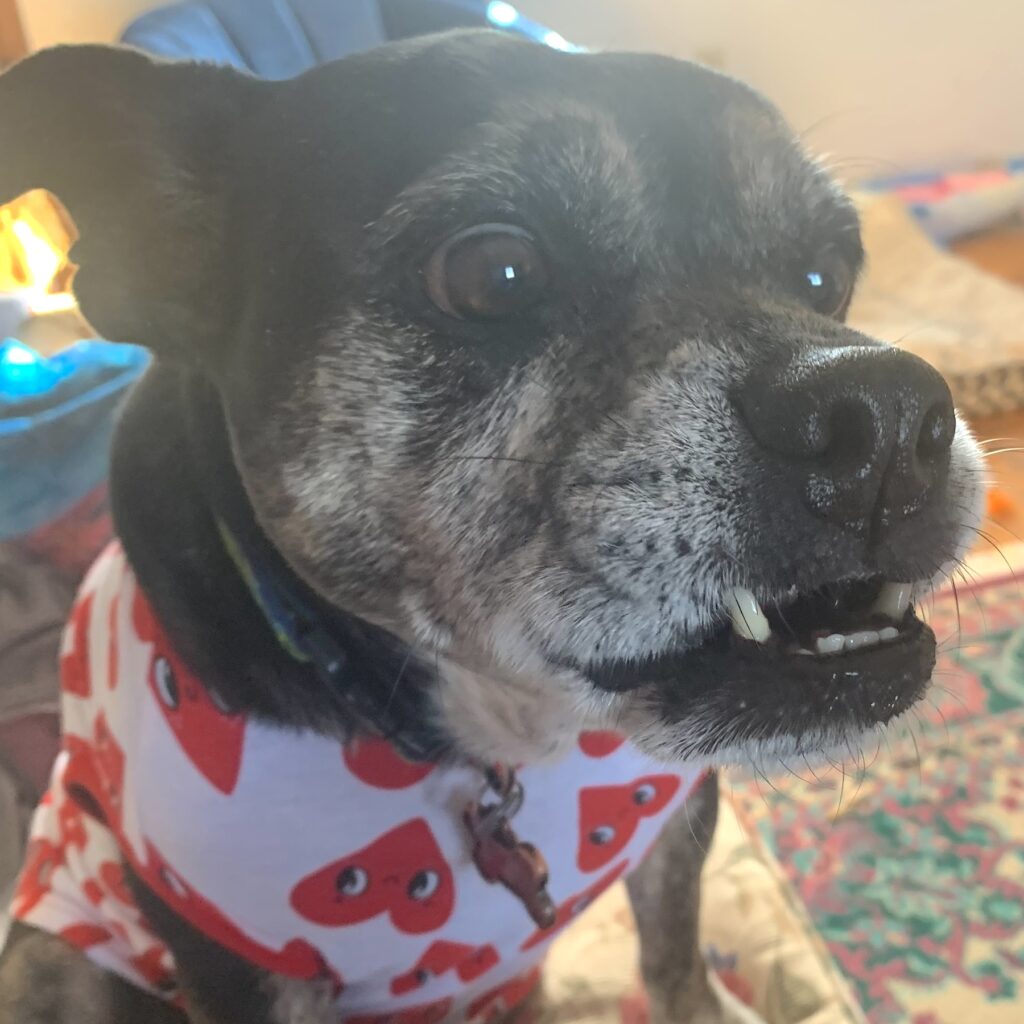

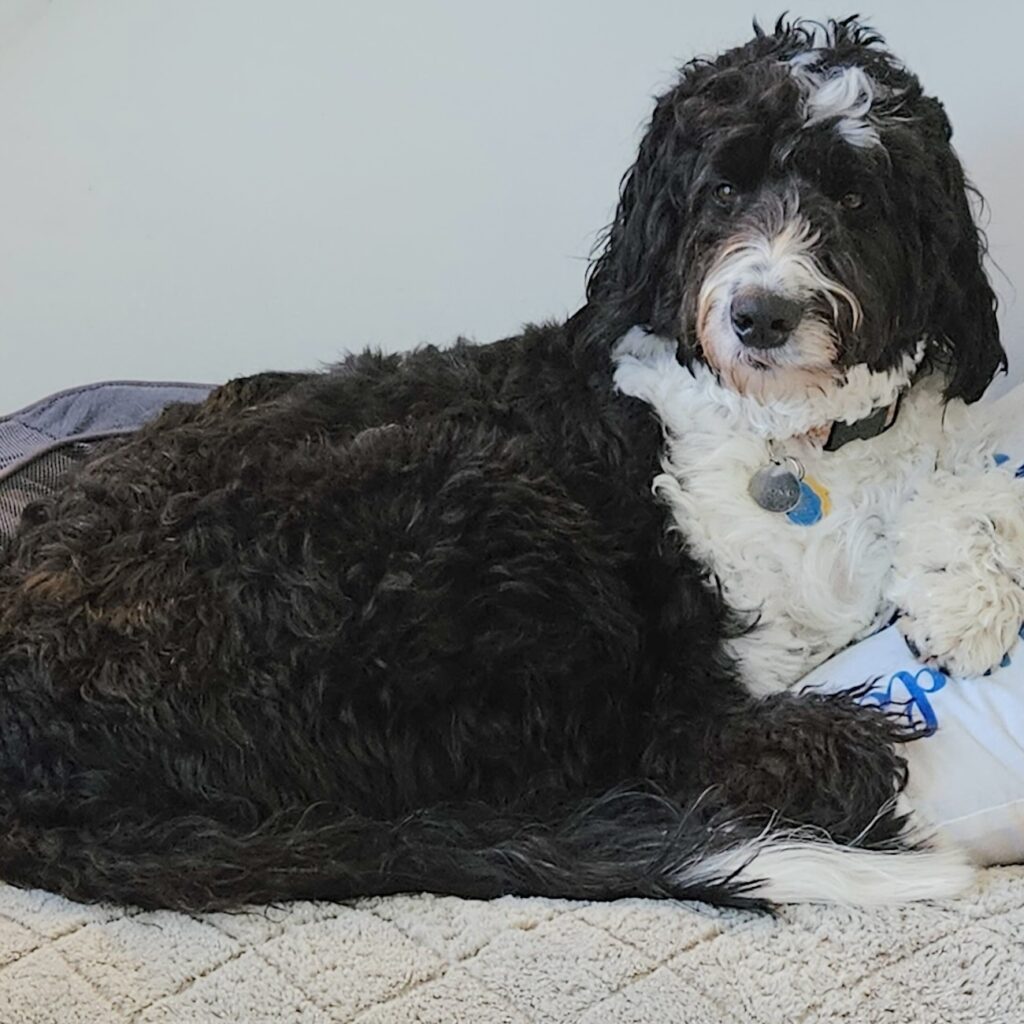

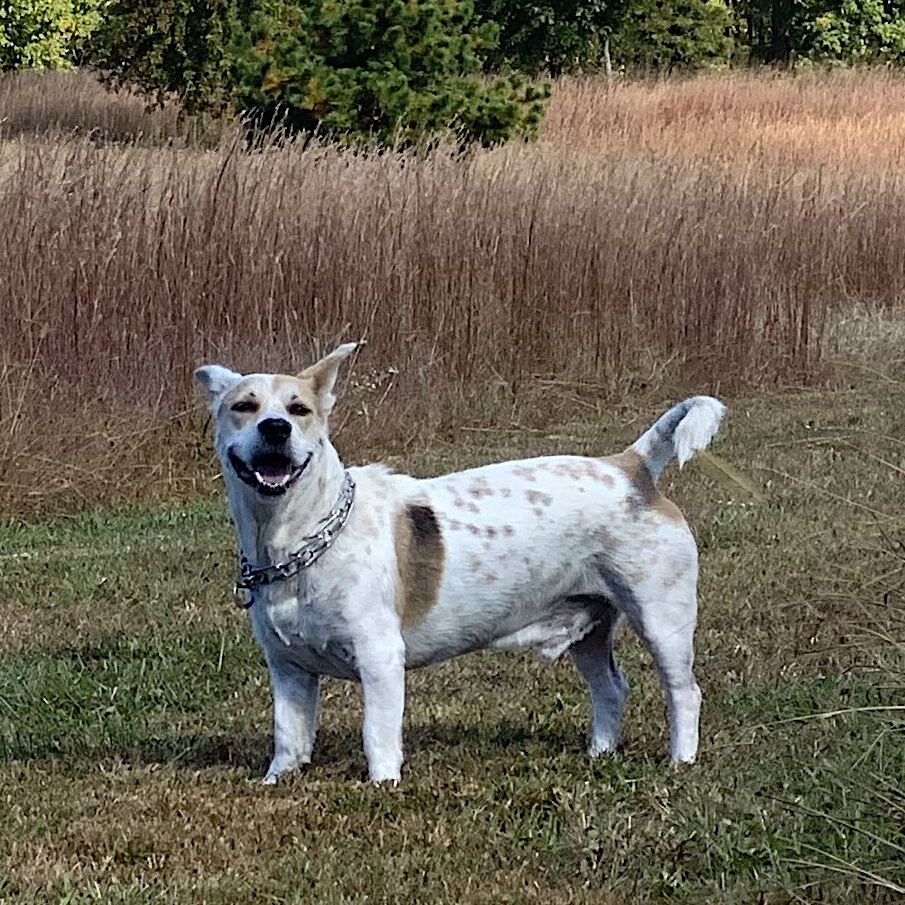
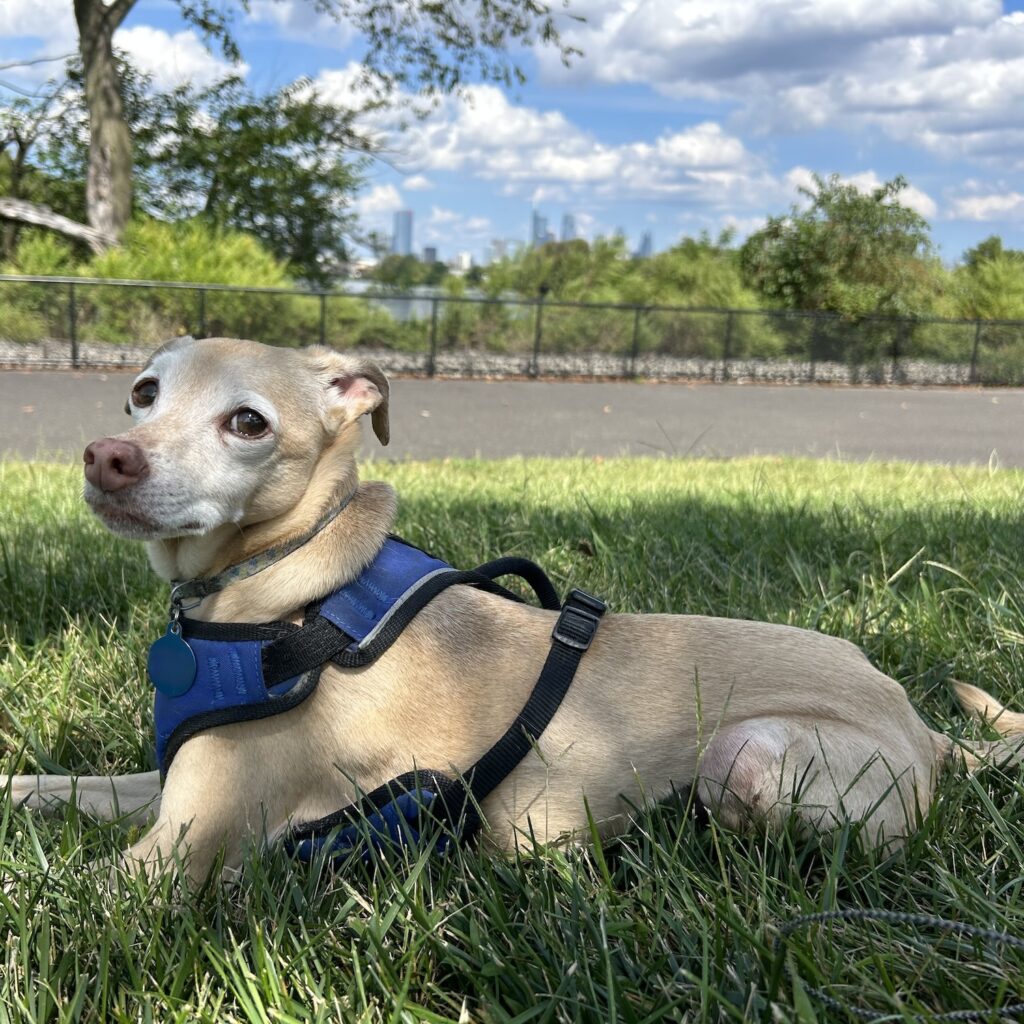
Featured image: Peter and Peggy (and their dog!) Visit the Dust Imps, cover of a promotional booklet for Dowflake Calcium Chloride marketed for controlling dust on unpaved roads, 1932.
Why oral history is critical for the history of science and engineering.
A chemistry curriculum with bonds beyond the molecule.
What we can no longer learn from Yoichiro Ito.
Copy the above HTML to republish this content. We have formatted the material to follow our guidelines, which include our credit requirements. Please review our full list of guidelines for more information. By republishing this content, you agree to our republication requirements.